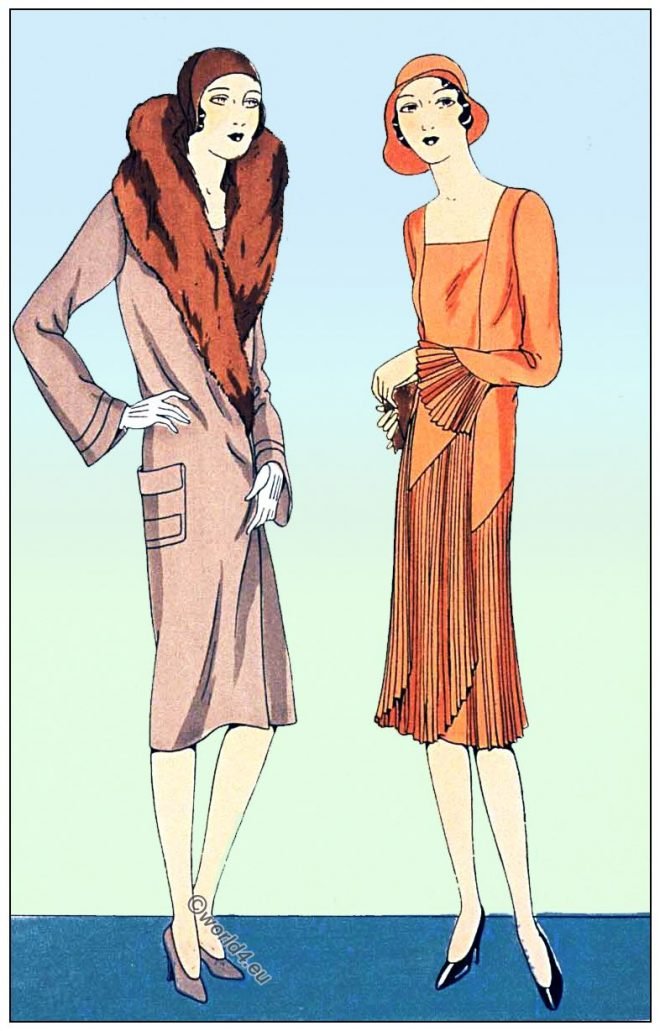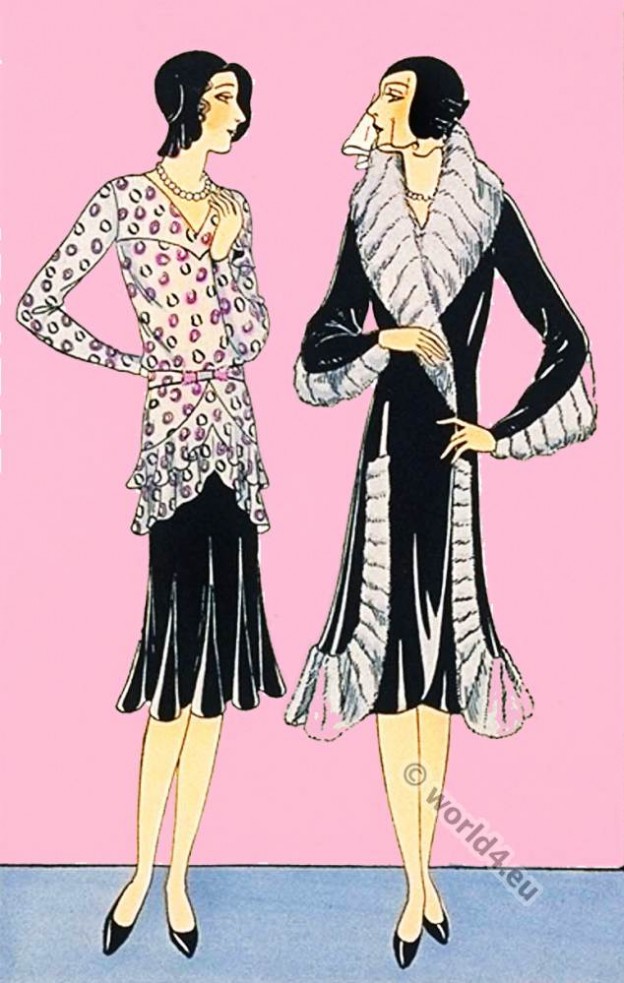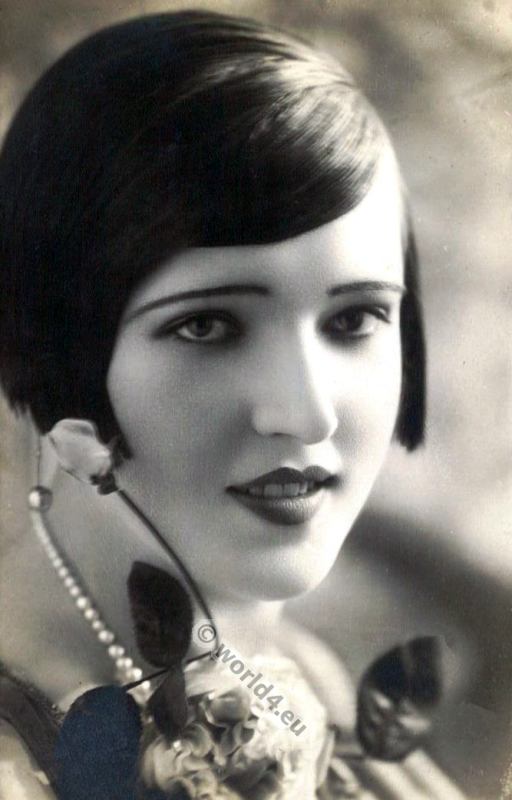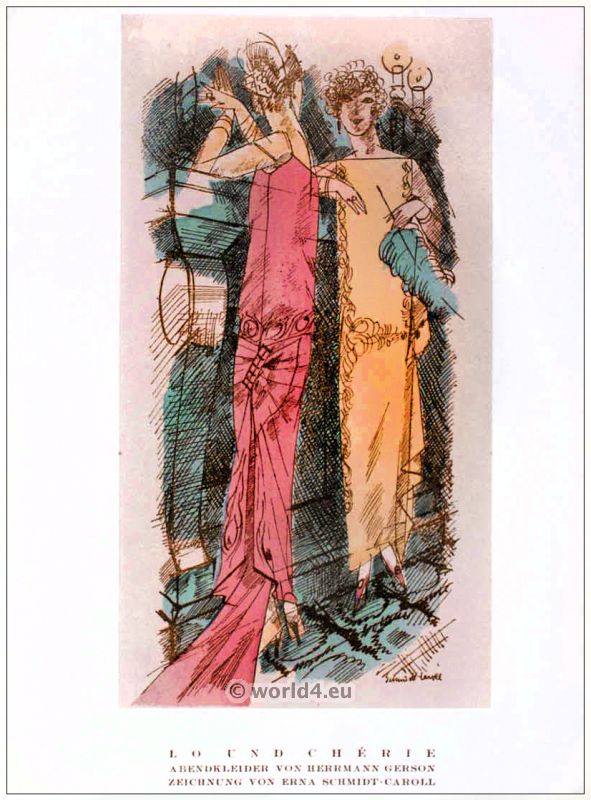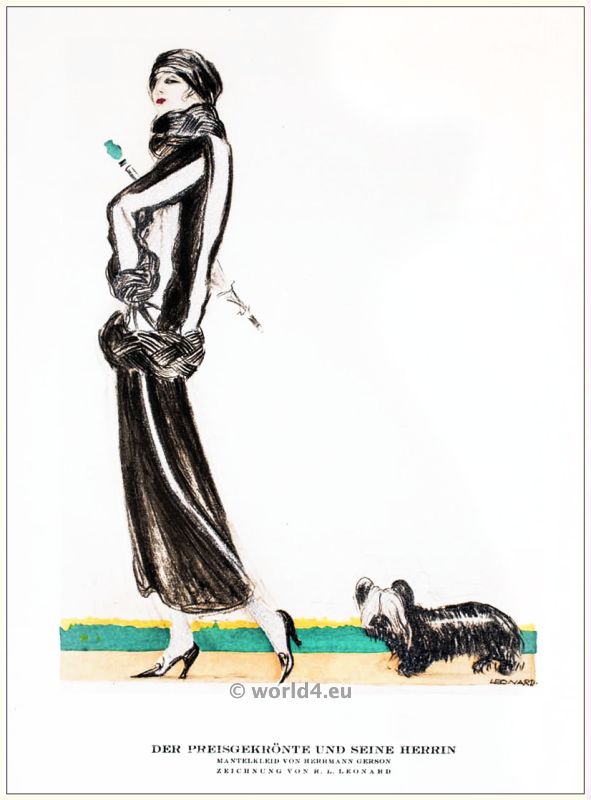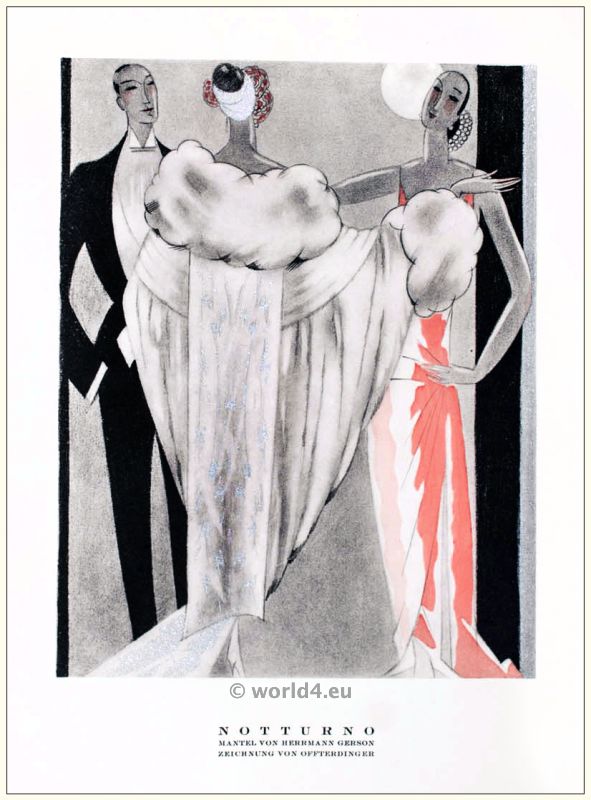Les Créations Parisiennes. La Mode est un Art. Haute Couture by PAUL POIRET 1930.
Tag: Flapper
In the 1920s, the term designated Flapper, someone who flutters, young women who wore short skirts and short hair, listened to Jazz and confidently put in Scene contrary to the prevailing morality. The Flapper were considered naughty and immoral because they wore make-up, hard alcohol drinking and smoking. As a possible model for the type of the flapper, the independent young woman, the Gibson Girl applies. Although there is between the Gibson Girl and the Flapper no outward similarity, but were for the Gibson Girl independence and self-confident femininity typical.
Model dresses by Jean Patou and Bernard & Cie in September 1929.
Les Créations Parisiennes. La Mode est un Art. Paris 1929.
Mrs. Condé Nast, Clarisse Coudert, fashion designer, 1917.
Mrs. Condé Nast wearing one of the famous Fortuny tea gowns.
Costumes Aladin by Germaine Lecomte 1929.
Costumes Aladin by Germaine Lecomte 1929.
Chic manteau de velours noir by Germaine Lecomte.
Chic black velvet coat trimmed with black and white fox. Fancy suit in blue velvet with silver embroidery (Lefaurichon fabric).
Historically Accurate. Flapper girl makeup and hairstyle.
Back to the 1920s as she prepares for a night of jazz, class and stylish decadence.
Lo and Chérie. Evening Dresses by Herrmann Gerson.
Evening Dresses by Herrmann Gerson. Drawing by Erna Schmidt-Caroll. Styl, table 3, Issue 5/6.
The award-winning and his mistress, by Herrmann Gerson.
Coat dress by Herrmann Gerson. Drawing by R. L. Leonard. Styl, table 12, Issue 5, 1922.
Soiree. Model of Herrmann Gerson. STYL 1920s
Model of Herrmann Gerson. Drawing by R. L. Leonard. Style, panel 10, Issue VII, 1922.
Notturno. Coat by Herrmann Gerson. STYL 1922
Drawing by Annie Offterdinger (1894 – 1987). Styl, Plate 1, Book VIII, 1922.


